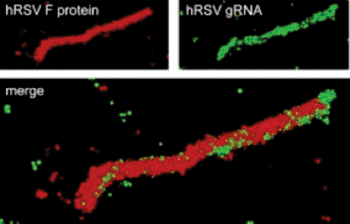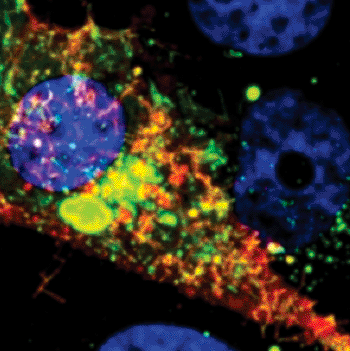Imaging Technology Could Solve Childhood Disease Secrets
By MedImaging International staff writers
Posted on 14 Jan 2014
Most children, by the time they are two-years-old, have had respiratory syncytial virus (RSV) and suffered symptoms similar to a severe cold. However, for some children, in particular, for premature infants and those with underlying health problems, RSV can lead to pneumonia and bronchitis, which can require hospitalization and have long-term consequences.Posted on 14 Jan 2014
A new technique for studying the structure of the RSV virion and the activity of RSV in living cells could help researchers solve the mysteries of the virus, including how it enters cells, how it replicates, how many genomes it inserts into its hosts, and possibly why specific lung cells escape the infection comparatively unharmed, which could provide scientists with the data they need to develop new antiviral drugs and perhaps even a vaccine to prevent severe RSV infections.
“We want to develop tools that would allow us to get at how the virus really works,” said Dr. Philip Santangelo, an associate professor in the Wallace H. Coulter department of biomedical engineering at Georgia Institute of Technology (Georgia Tech; Atlanta, GA, USA) and Emory University (Atlanta, GA, USA). “We really need to be able to follow the infection in a single living cell without affecting how the virus infects its hosts, and this technology should allow us to do that.”
The research was published online ahead of print in the journal ACS Nano on December 30, 2013. While RSV will be the first target for the work, the researchers believe the imaging technique they developed could be used to study other RNA viruses, including influenza and Ebolavirus. “We’ve shown that we can tag the genome using our probes,” explained Dr. Santangelo. “What we’ve learned from this is that the genome does get incorporated into the virion, and that the virus particles created are infectious. We were able to characterize some aspects of the virus particle itself at super-resolution, down to 20 nm, using direct stochastic optical reconstruction microscopy [dSTORM] imaging.”
RSV can be difficult to study. For one thing, the infectious particle can take different forms, ranging from 10-µm filaments to ordinary spheres. The virus can insert more than one genome into the host cells, and the RNA orientation and structure are disordered, which makes it difficult to characterize.
The research team, which included scientists from Vanderbilt University (Nashville, TN, USA) and Emory University, used a probe technology that quickly attaches to RNA within cells. The probe employs multiple fluorophores to indicate the presence of the viral RNA, allowing the researchers to see where it goes in host cells, and to view as infectious particles leave the cells to spread the infection.
The research depended on a new method for labeling RNA viruses using multiply labeled tetravalent RNA imaging probes (MTRIPS). The probes consist of a chimeric combination of DNA and RNA oligonucleotide labeled internally with fluorophores tetravalently complexed to neutravidin. The chimeric combination was used to help the probes evade cellular defenses.
The probes, when introduced into cells, rapidly diffuse through a cell infected with RSV and bind to the virus’s RNA. Though binding tightly, the probe does not affect the normal activities of the virus and allows researchers to follow the activity for days using standard microscopy techniques. The MTRIPS can be used to complement other probe technology, such as green fluorescent protein (GFP) and gold nanoparticles.
To study the infection’s progress in individual cells, the researchers faced another challenge: living cells move around, and following them complicates the research. To tackle that movement, the laboratory of Thomas Barker, also from the Coulter department, used micropatterned fibronectin on glass to create 50-µm “islands” that contained the cells during the study.
Among the mysteries, that the researchers would like to solve is why certain lung cells are severely infected, while others appear to escape ill effects. “If you look at a field of cells, you see huge differences from cell to cell, and that is something that’s not understood at all,” Dr. Santangelo said. “If we can figure out why some cells are exploding with virus while others are not, perhaps we can figure out a way to help the bad ones look more like the good ones.”
Related Links:
Georgia Institute of Technology
Emory University
Vanderbilt University
















